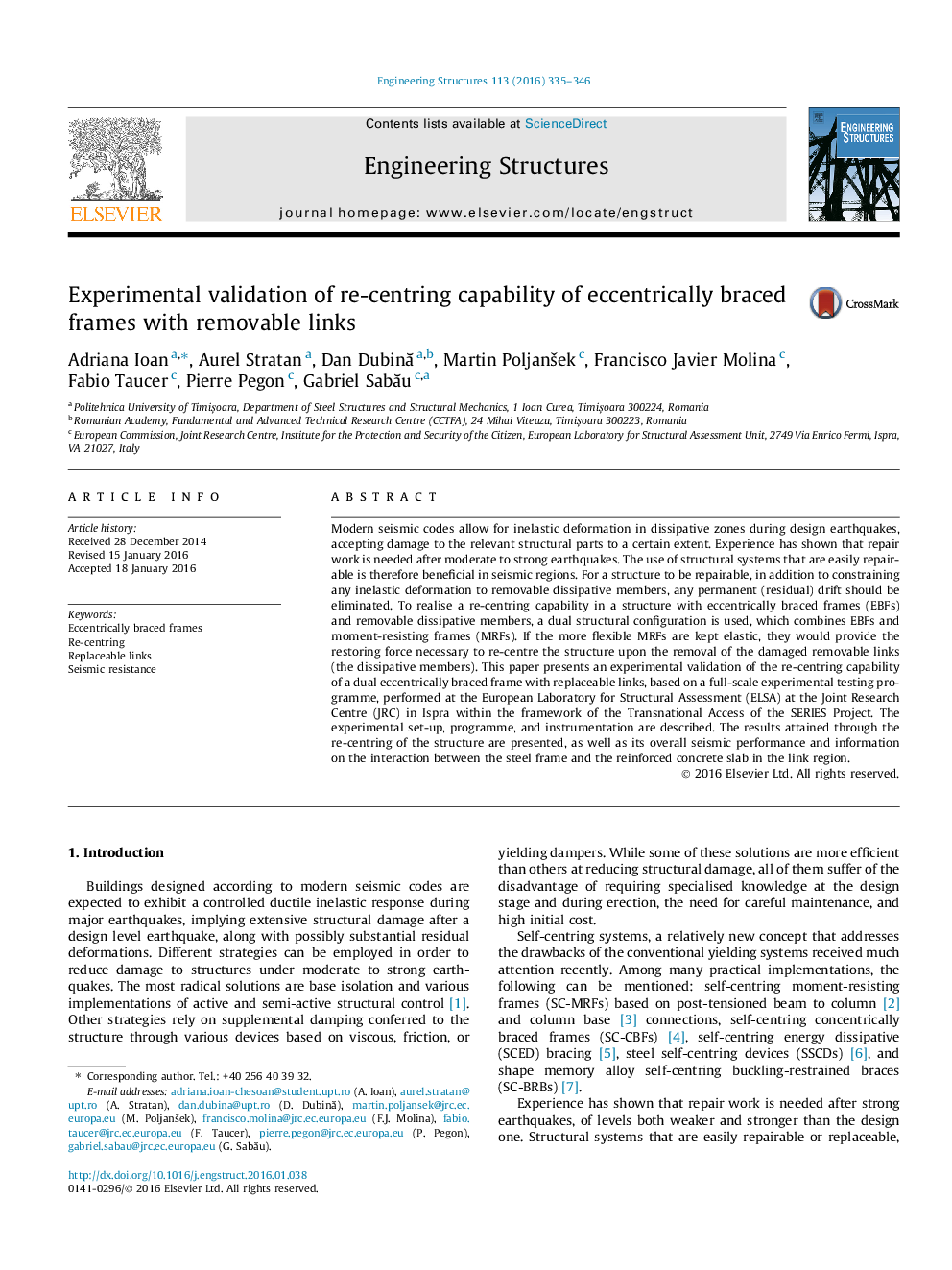| Article ID | Journal | Published Year | Pages | File Type |
|---|---|---|---|---|
| 6740159 | Engineering Structures | 2016 | 12 Pages |
Abstract
Modern seismic codes allow for inelastic deformation in dissipative zones during design earthquakes, accepting damage to the relevant structural parts to a certain extent. Experience has shown that repair work is needed after moderate to strong earthquakes. The use of structural systems that are easily repairable is therefore beneficial in seismic regions. For a structure to be repairable, in addition to constraining any inelastic deformation to removable dissipative members, any permanent (residual) drift should be eliminated. To realise a re-centring capability in a structure with eccentrically braced frames (EBFs) and removable dissipative members, a dual structural configuration is used, which combines EBFs and moment-resisting frames (MRFs). If the more flexible MRFs are kept elastic, they would provide the restoring force necessary to re-centre the structure upon the removal of the damaged removable links (the dissipative members). This paper presents an experimental validation of the re-centring capability of a dual eccentrically braced frame with replaceable links, based on a full-scale experimental testing programme, performed at the European Laboratory for Structural Assessment (ELSA) at the Joint Research Centre (JRC) in Ispra within the framework of the Transnational Access of the SERIES Project. The experimental set-up, programme, and instrumentation are described. The results attained through the re-centring of the structure are presented, as well as its overall seismic performance and information on the interaction between the steel frame and the reinforced concrete slab in the link region.
Related Topics
Physical Sciences and Engineering
Earth and Planetary Sciences
Geotechnical Engineering and Engineering Geology
Authors
Adriana Ioan, Aurel Stratan, Dan DubinÄ, Martin PoljanÅ¡ek, Francisco Javier Molina, Fabio Taucer, Pierre Pegon, Gabriel SabÄu,
